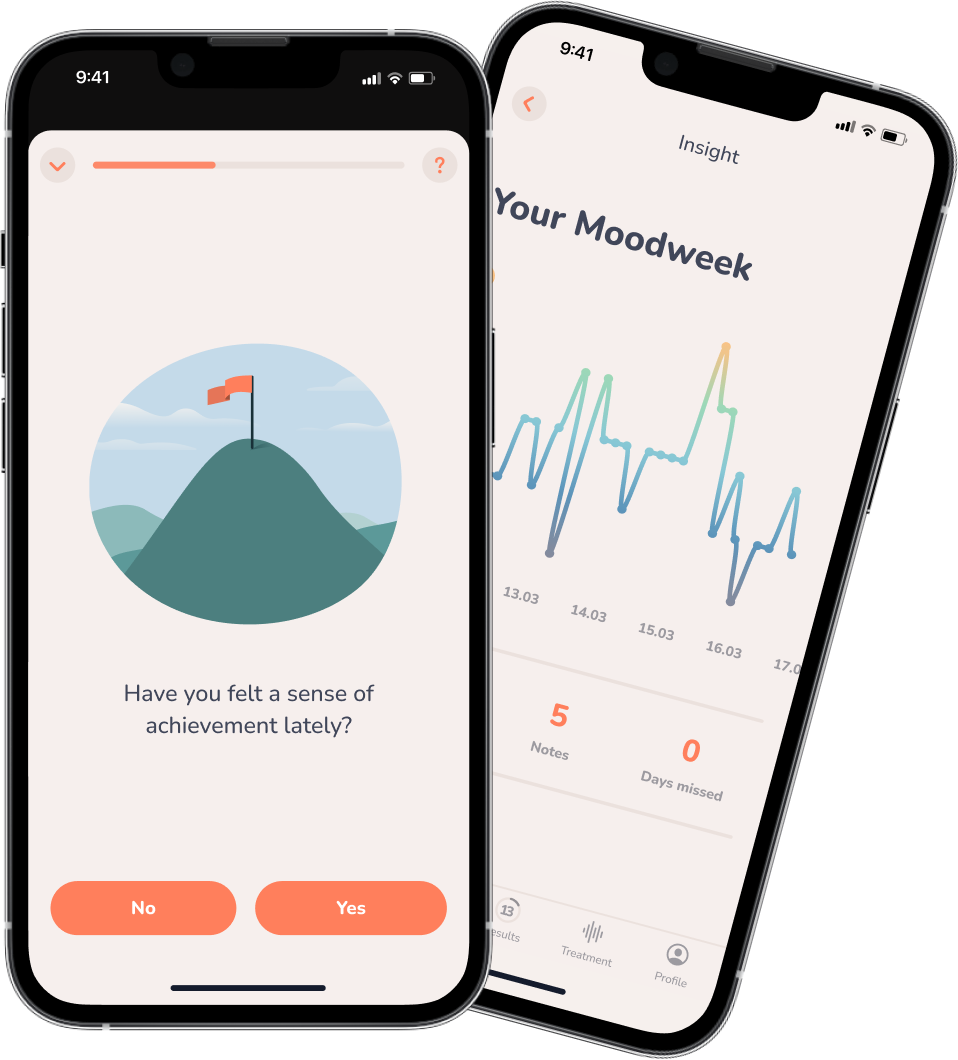Insight
High-Functioning Depression: The Hidden Suffering
When people think of depression, usually intense sadness, low energy, social withdrawal, difficulty getting out of bed, and managing daily life come to mind. But this is not always the case. Those with high-functioning depression can, in fact, continue to navigate their daily lives, excel at work, and engage in social activities. Often from the outside, everything seems fine. But, as they say, appearances can be deceiving. Maintaining this facade often in the face of inner emptiness and exhaustion can take enormous effort and be virtually invisible to others. This article explores what this form of depression looks like and how it fits into clinical diagnoses.

A Look Behind the Intact Facade
Sarah is in her early thirties, works as a project manager at a large company, and is in a stable relationship. She is responsible, handles her tasks, and is seen by her colleagues as successful and dedicated. From the outside, her life seems “perfect”—she has a well-paid job, a great apartment, and a solid social circle.
Yet, Sarah often feels empty and exhausted. She senses a constant sadness in her daily life, almost as a kind of background hum. She struggles with severe self-doubt and frequently has poor sleep. Every day, she gets up, goes to work, completes all she has to do efficiently and professionally—but without genuine joy, pride, or motivation. Her co-workers and friends have no idea how she’s really feeling because she works hard not to let it show. She does a lot both at and outside work, laughing at all the right moments—yet internally, she feels isolated and drained, and over time, this feeling has gotten worse and worse. Her sense now is that she’s just “functioning,” without truly participating in life.
Though Sarah knows she’s not feeling the best, she doesn’t think it’s “bad enough” to seek help. After all, she’s able to do all that’s put in front of her. But she does occasionally wonder how much longer she can go on like this.
Sarah’s example shows that even when people seem to be functioning fine in their daily lives, they can be suffering with such depressive symptoms as low mood, low self-esteem, or problems sleeping. The insidious part of high-functioning depression is that those affected and the people around them usually don’t recognize the illness as such or don’t take symptoms seriously. The perception that all is going well can lead to the false conclusion that the symptoms aren’t severe enough to take action. As a result, they either don’t seek professional help at all or wait until very late to seek it, even when facing high levels of distress.
Classification of High-Functioning Depression
High-functioning depression is not an official diagnosis in and of itself in common classification systems for mental disorders (ICD-10 and DSM-5), mainly because there’s been a dearth of research studies related to the specifics of how it works. People in the situation of experiencing depressive symptoms while still functioning at work and in social settings, then, fall into various diagnostic categories that reflect the duration and severity of the symptoms.
Depressive Episode
A depressive episode is the most common form of depression. Symptoms include a depressed or low mood, lack of drive, and loss of interest or pleasure over a period of at least two weeks. Depending on the number and severity of the symptoms, a depressive episode can be mild, moderate, or severe.
Those with mild depression have difficulty coping with daily tasks, social interactions, and work, but do not give up on them completely. In contrast, those experiencing a severe depressive episode tend to be very limited in their capacity to continue such daily activities, sometimes to the point of not doing them at all.
Atypical Depression
People affected by atypical depression experience depressive symptoms that differ in type, number, or duration from the classic symptoms of a depressive episode and might include:
- A generally low or depressed mood, but one that can temporarily lighten in response to positive events
- Increased appetite or weight gain
- Excessive sleeping
- A heavy, leaden feeling in the limbs
- Heightened sensitivity to rejection
Often, those struggling with atypical depression seem fine from the outside as they’re able to manage their daily lives, yet internally, they’re suffering.
Dysthymia
Dysthymia, also known as persistent depressive disorder, refers to a long-lasting depressive mood that persists for at least two years. The depressive symptoms are less pronounced than in a depressive episode. This chronic condition often begins in early adulthood. Those affected usually experience days or weeks of feeling better, but then suffer again for longer periods with having a depressed mood, ruminating, experiencing low energy, and finding daily life exhausting. Typically, people suffering from dysthymia are able to manage daily tasks, which is why their suffering often goes unnoticed by those around them. And they, themselves, don’t always recognize their symptoms as a mental health issue, particularly if the symptoms have been present for a long time and are relatively mild. They may, instead, mistakenly view them as part of their personality—”I’ve always been a bit low energy.”
Seeking Help for Depression
Whether high-functioning depression corresponds to a (mild) depressive episode, atypical depression, or dysthymia can only be determined through a professional diagnosis by a doctor or therapist. The most important step in addressing depressive symptoms of any kind is to take them seriously and seek support—preferably as early as possible.
If you’re feeling distressed, whether or not you’re still “functioning” in your daily life, you might consider confiding in someone and seeking help. Without treatment, depressive disorders generally last much longer than they would otherwise and could even worsen. The appropriate treatment depends on the severity and duration of the symptoms. Not every form of depression requires psychotherapy or medication. Sometimes, self-help resources can make a big difference as they provide opportunities to learn more about the condition as well as coping strategies aimed at easing distress.

People-Pleasing — When the Fear of Rejection Becomes a Trap
Are you a person who places a high value on kindness, consideration and helpfulness? Or … maybe you tend toward what’s called “people-pleasing”?

Psychological Needs in the Workplace: How to Meet Them
Deadlines, conflicts, pressure to perform—many people grapple with stressors at work. The extent to which these weigh on someone depends in large part on whether psychological needs are being met at work.

Obsessive-Compulsive Disorder: When Thoughts and Actions Become Torture
In this article, we explore what characterizes such thoughts and behaviors as well as how they can be treated.

Bullied at Work—Here’s What You Can Do!
In this article, we look at the nature of workplace bullying, its causes and consequences, and what you can do if you are being bullied at work.



